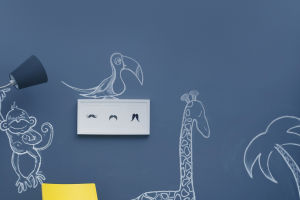Living in a busy modern life, I believe that many people, for the sake of convenience, often collect their clothes for a week and then throw them all into the washing machine for washing.
In fact, it is easy to pay no attention to this, and it is likely to cause problems such as dyeing, pulling, and uncleaning of clothes.
Now, you just need to follow the "six correct laundry steps" below. In the future, you only need to spend 2 minutes and pay more attention to these small details, and you can make your clothes last longer!
First of all, please check all the pockets of the clothes for any remaining paper scraps or toilet paper before entering all washing steps!
Believe that friends who have had this experience know that this will be a disaster (it will take a long time to clean up~) After confirming, you can start the correct steps of laundry!
Laundry Step 1: Hand Washing Intimate Clothing
It is strongly recommended that you wash your underwear, outerwear, and socks separately.
Because socks are prone to many bacteria and molds (the thicker the socks, the more likely they are), if the socks get dirty and moldy, they may cause skin problems.
If there are children in the family with weak resistance, the clothes and underwear are not suitable for washing with adults. It is also recommended to use neutral and mild lotion when washing clothes by hand.
Laundry Step 2: Check the Washing Label to Sort Your Clothes
Before washing, you must first understand the washing mark on the clothes to determine whether it can be washed or needs dry cleaning?
Clothes can be classified according to their "color" and "material"!
The color should be washed separately for dark and light-colored clothes. It is recommended to pull out new clothes and wash them separately.
For the material part, put shirts and woolen clothes (such as sweaters, corduroy clothes, and clothes that are prone to pilling) into the laundry bag to avoid washing the clothes.
Laundry Step 3: Follow the suggested dosage
Please put the "correct amount of lotion" properly according to the recommended instructions! Some people think that the more detergent you put in, the cleaner your clothes will be.
This is wrong! Excessive dosage is not only likely to cause allergies or itching to the person who wears it, but also the residue of lotion is one of the culprits that cause yellow spots on clothes!
Laundry step 4: pour the detergent first, then put the clothes
The correct way of washing detergent and washing powder should be "dissolve first and then wash", especially washing powder. As long as it is fully dissolved in the washing tank with water first, then put in the dirty clothes, and let it sit for about 30 minutes to soak, there will be less problem of detergent residue and the clothes can be washed clean and smooth!
Laundry Step 5: Properly dry clothes
After washing the clothes, it is the best choice to dry them as soon as possible! Putting clothes in the washing machine not only makes the clothes easy to wrinkle, but also the bacteria in the washing machine are more likely to be stained on the clothes!
Laundry Step 6: Regularly clean the washing machine
If there is no regular cleaning, the residual dirt, bacteria and remaining lotion on the clothes during laundry are easy to adhere to the inside of the washing machine, and even emit peculiar smell.
Because the humidity in the washing machine is very suitable for bacteria to survive, take it out immediately after washing.
The interior should be cleaned with the special detergent for the laundry tub regularly for one to two months, and then after each time the clothes are dried, the top cover should be opened for ventilation for 30 minutes to 1 hour, and the water remaining in the laundry tub should be dispersed before closing. cover to prevent the growth of bacteria.
Is it necessary to use disinfectant laundry detergent?
The words bactericidal and bacteriostatic are very common on the packaging of laundry detergents.
Sterilization and bacteriostasis are mainly by adding bactericides or bacteriostatic agents to the laundry liquid; disinfecting laundry liquids requires adding disinfectants to laundry liquids.
In a specific period, such as long-term humidity and rain, and bacteria are easy to breed, you can use a sterilizing laundry detergent, but it is not recommended to use it frequently.
Because disinfectants are usually more irritating and the risk of sensitization is also high, and several kinds of disinfectants are usually added to the sterilizing and disinfecting laundry detergent at the same time, long-term use not only greatly increases the risk of allergies, but also causes Generation of resistant strains.


